-
 Bitcoin
Bitcoin $107,206.1724
-0.18% -
 Ethereum
Ethereum $2,428.3208
0.37% -
 Tether USDt
Tether USDt $1.0003
-0.02% -
 XRP
XRP $2.1035
-3.85% -
 BNB
BNB $645.3738
0.13% -
 Solana
Solana $142.6106
-0.94% -
 USDC
USDC $0.9998
-0.01% -
 TRON
TRON $0.2715
0.06% -
 Dogecoin
Dogecoin $0.1599
-2.75% -
 Cardano
Cardano $0.5528
-3.00% -
 Hyperliquid
Hyperliquid $36.8787
-1.27% -
 Bitcoin Cash
Bitcoin Cash $492.5741
1.66% -
 Sui
Sui $2.6151
-5.39% -
 Chainlink
Chainlink $13.0513
-0.33% -
 UNUS SED LEO
UNUS SED LEO $9.0130
0.15% -
 Stellar
Stellar $0.2346
-2.97% -
 Avalanche
Avalanche $17.2181
-2.82% -
 Toncoin
Toncoin $2.8045
-1.12% -
 Shiba Inu
Shiba Inu $0.0...01122
-3.26% -
 Litecoin
Litecoin $84.4240
-0.01% -
 Hedera
Hedera $0.1432
-4.64% -
 Monero
Monero $313.4989
0.48% -
 Dai
Dai $0.9998
-0.01% -
 Ethena USDe
Ethena USDe $1.0001
0.00% -
 Polkadot
Polkadot $3.3006
-2.38% -
 Bitget Token
Bitget Token $4.4773
2.55% -
 Uniswap
Uniswap $6.8249
-1.58% -
 Pi
Pi $0.5572
-12.72% -
 Pepe
Pepe $0.0...09217
-4.77% -
 Aave
Aave $252.5273
-2.11%
Is it an opportunity if KDJ is blunt at a low level but the trading volume is enlarged?
When the KDJ indicator is blunt at a low level with increased volume, it may signal potential accumulation in crypto markets.
Jun 26, 2025 at 11:07 am
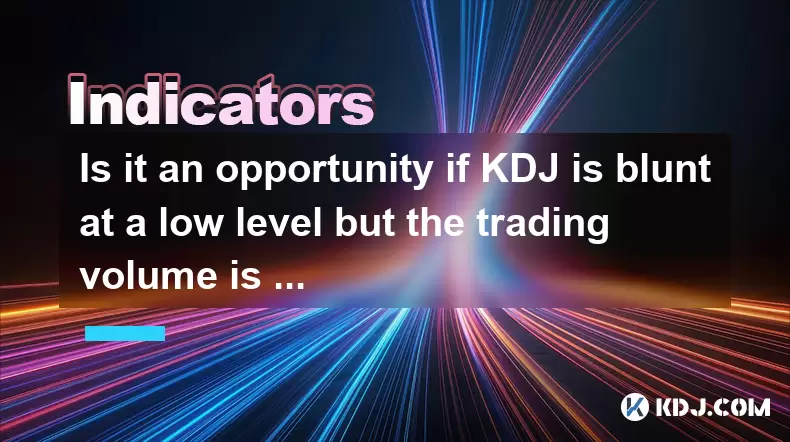
Understanding the KDJ Indicator in Cryptocurrency Trading
The KDJ indicator, also known as the stochastic oscillator, is a momentum-based technical analysis tool widely used in cryptocurrency trading. It consists of three lines: K-line, D-line, and J-line. These lines oscillate between 0 and 100, helping traders identify overbought or oversold conditions. When the KDJ indicator is blunt at a low level, it typically means that the K and D lines are flattening out near the lower end of the scale (below 20), suggesting that the asset may be oversold.
In traditional market logic, this scenario might signal an upcoming price rebound. However, in the volatile world of cryptocurrencies, additional confirmation from other indicators such as volume becomes crucial. If the trading volume increases significantly while the KDJ remains flat at a low level, it introduces complexity to the interpretation.
What Does It Mean When KDJ Is Blunt at a Low Level?
When the KDJ is blunt at a low level, it indicates a lack of momentum in either direction. This usually occurs during strong downtrends where selling pressure has stabilized, but buyers haven't stepped in yet. In crypto markets, which are highly speculative and often driven by sentiment, this can mean that bears have exhausted their energy, but bulls remain hesitant.
- The K-line reflects short-term momentum.
- The D-line acts as a moving average of the K-line.
- The J-line shows the divergence between K and D.
If all three lines are stagnant near the bottom, it suggests indecision in the market. However, without volume support, this pattern alone isn’t sufficient to confirm a reversal.
The Role of Enlarged Trading Volume in This Scenario
An increase in trading volume during a period when the KDJ is blunt at a low level can be a powerful signal. Typically, rising volume signals increased interest from traders or institutional players. In the context of a prolonged downtrend, higher-than-average volume could suggest that large buyers are accumulating assets quietly.
Here’s how to interpret this combination:
- Increased volume with flat KDJ: Suggests potential accumulation phase.
- Volume surges without price rise: May indicate hidden buying.
- Sustained high volume after sharp decline: Could mark the beginning of a new trend.
It's important to closely monitor candlestick patterns and support levels alongside these indicators.
How to Analyze This Situation Step-by-Step
To assess whether this is an opportunity, follow these steps carefully:
- Check the overall market structure: Determine if the asset is in a bearish trend or consolidating.
- Look at key support zones: Identify if the current price is approaching a historically significant support level.
- Observe volume spikes: Use tools like On-Balance Volume (OBV) or Volume Weighted Average Price (VWAP) for deeper insight.
- Cross-reference with moving averages: See if the price is above or below major moving averages like the 50-day or 200-day EMA.
- Watch for bullish candlestick patterns: Such as hammer, inverted hammer, or engulfing patterns forming around the same time.
This multi-layered approach ensures you’re not relying solely on one indicator and helps reduce false signals.
Practical Steps to Trade This Setup
If you believe this is a potential opportunity based on your analysis, here’s how to proceed cautiously:
- Wait for confirmation: Don’t enter immediately. Look for a breakout above resistance or a close above a key moving average.
- Set a tight stop-loss: Given the volatility in crypto markets, always protect your downside.
- Use position sizing wisely: Allocate only a portion of your capital to avoid overexposure.
- Monitor order flow: Watch the order book for signs of aggressive buying or whale accumulation.
- Track news and sentiment: Sometimes volume spikes are due to external events rather than organic accumulation.
This cautious approach helps manage risk while still allowing participation in a potential rally.
Frequently Asked Questions
Q: What is considered a "blunt" KDJ?
A: A blunt KDJ refers to when both the K and D lines flatten out, showing no clear upward or downward movement, typically near the extreme ends of the indicator range (either below 20 or above 80).
Q: Can I rely solely on KDJ and volume to make a trade decision?
A: No single indicator should be used in isolation. While KDJ and volume offer valuable insights, combining them with other tools like moving averages, RSI, or Fibonacci retracements improves accuracy.
Q: How long should I wait for confirmation after seeing this setup?
A: There’s no fixed timeframe, but waiting for at least two consecutive candles to show strength beyond key resistance levels can provide stronger confirmation.
Q: Why does volume matter more in crypto than in traditional markets?
A: Crypto markets are less regulated and more influenced by retail traders and whales. Therefore, volume spikes often reflect genuine shifts in supply and demand dynamics more quickly than in traditional markets.
Disclaimer:info@kdj.com
The information provided is not trading advice. kdj.com does not assume any responsibility for any investments made based on the information provided in this article. Cryptocurrencies are highly volatile and it is highly recommended that you invest with caution after thorough research!
If you believe that the content used on this website infringes your copyright, please contact us immediately (info@kdj.com) and we will delete it promptly.
- QFSCOIN: Your No-Sweat Ticket to Crypto Mining Riches (Bitcoin, Dogecoin, Litecoin)
- 2025-06-27 00:50:12
- Moonveil's $MORE Token: Powering the Future of Web3 Gaming with CEX Listings
- 2025-06-27 00:30:12
- Wormhole Crypto: Navigating Interoperability, Crash Risks, and 10x Potential
- 2025-06-27 00:30:12
- Kraken's Krak App: Revolutionizing Bitcoin and Crypto Payments, Ya Dig?
- 2025-06-27 00:52:13
- EthCC, Cannes, July 3rd: What's Buzzing in the Blockchain World?
- 2025-06-27 00:55:11
- Crypto Presales: Live Updates and the Latest News Shaping the Future
- 2025-06-27 00:55:11
Related knowledge
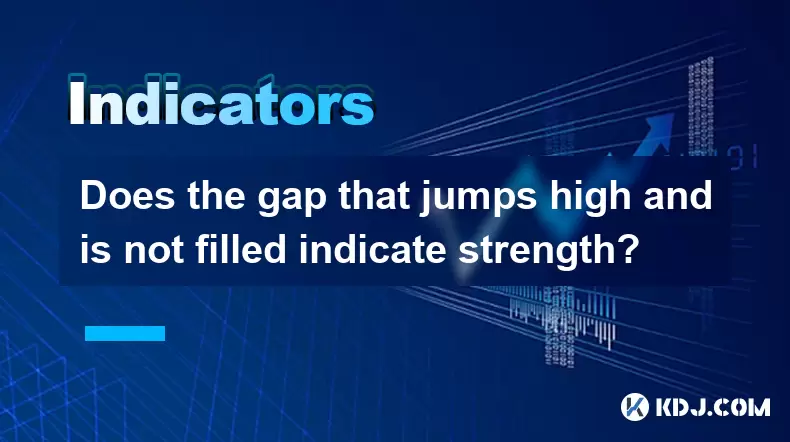
Does the gap that jumps high and is not filled indicate strength?
Jun 26,2025 at 11:36pm
Understanding the Concept of Gaps in Cryptocurrency ChartsIn the world of cryptocurrency trading, gaps refer to areas on a price chart where the price of an asset jumps significantly up or down, leaving no trading activity between two specific points. These gaps typically occur due to after-hours news, market sentiment shifts, or sudden influxes of buy/...
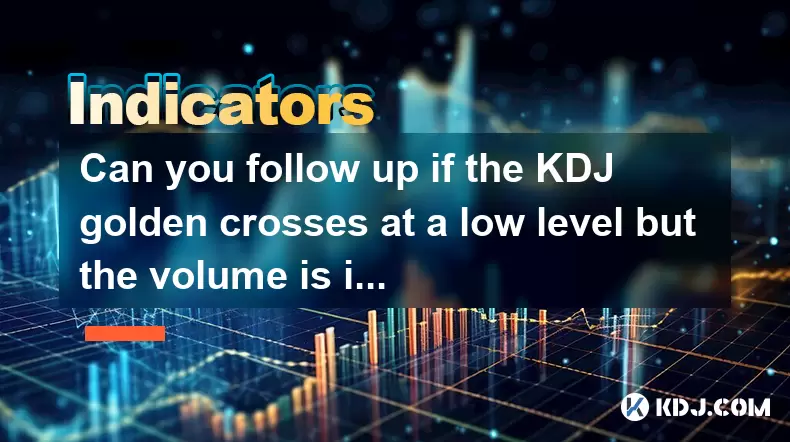
Can you follow up if the KDJ golden crosses at a low level but the volume is insufficient?
Jun 27,2025 at 12:01am
Understanding the KDJ Indicator in Cryptocurrency TradingThe KDJ indicator, also known as the stochastic oscillator, is a popular technical analysis tool used by cryptocurrency traders to identify potential buy and sell signals. It consists of three lines: the %K line, the %D line (which is a moving average of %K), and the %J line (a projection of the t...
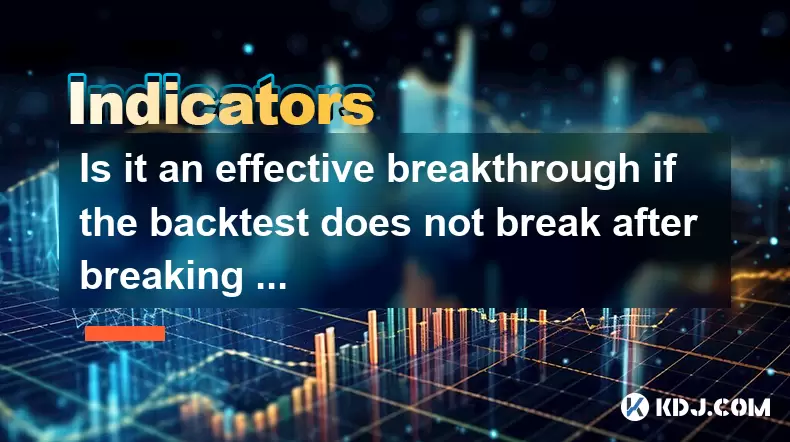
Is it an effective breakthrough if the backtest does not break after breaking through the neckline?
Jun 26,2025 at 10:08pm
Understanding the Role of Blockchain in Secure TransactionsBlockchain technology is at the heart of secure cryptocurrency transactions. Each block contains a list of transactions, and once recorded, altering past blocks becomes nearly impossible without network consensus. This immutability ensures that once a transaction is confirmed, it cannot be rever...
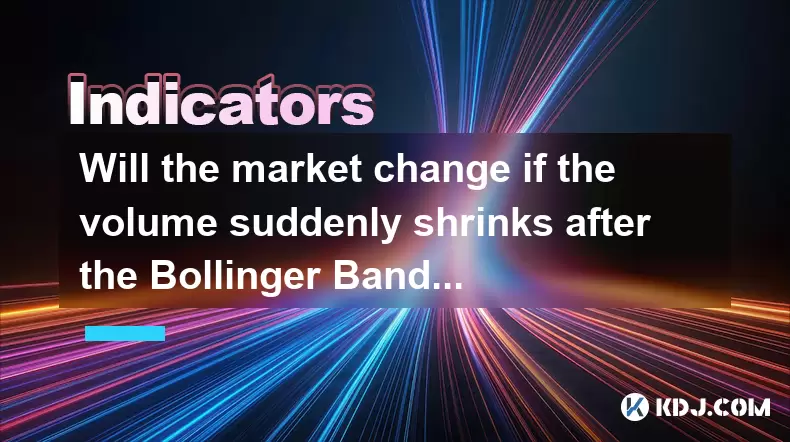
Will the market change if the volume suddenly shrinks after the Bollinger Bands open?
Jun 26,2025 at 09:56pm
Understanding the Bollinger Bands MechanismBollinger Bands are a widely used technical analysis tool that consists of a moving average and two standard deviation lines plotted above and below it. These bands dynamically adjust to price volatility, expanding during periods of high market activity and contracting when volatility decreases. Traders use thi...
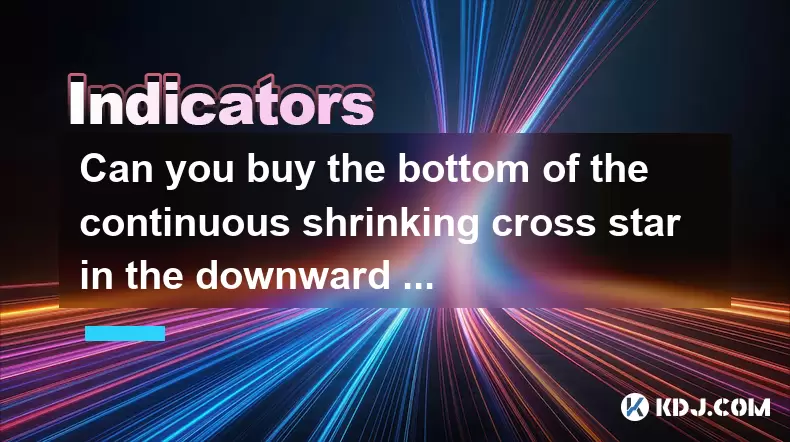
Can you buy the bottom of the continuous shrinking cross star in the downward trend?
Jun 26,2025 at 10:28pm
Understanding the Continuous Shrinking Cross Star PatternThe continuous shrinking cross star is a candlestick pattern that typically appears during a downtrend. It consists of multiple small-bodied candles with upper and lower shadows, indicating market indecision. Each subsequent candle in this pattern has a smaller body than the previous one, showing ...

Is there a main force bottom-fishing with a long lower shadow at a low position?
Jun 26,2025 at 10:56pm
Understanding the Candlestick Pattern: Long Lower Shadow at a Low PositionA long lower shadow candlestick pattern is often seen as a potential reversal signal in technical analysis. When this pattern appears at a low position, it suggests that sellers pushed prices down during the session, but buyers eventually stepped in and pulled the price back up ne...

Does the gap that jumps high and is not filled indicate strength?
Jun 26,2025 at 11:36pm
Understanding the Concept of Gaps in Cryptocurrency ChartsIn the world of cryptocurrency trading, gaps refer to areas on a price chart where the price of an asset jumps significantly up or down, leaving no trading activity between two specific points. These gaps typically occur due to after-hours news, market sentiment shifts, or sudden influxes of buy/...

Can you follow up if the KDJ golden crosses at a low level but the volume is insufficient?
Jun 27,2025 at 12:01am
Understanding the KDJ Indicator in Cryptocurrency TradingThe KDJ indicator, also known as the stochastic oscillator, is a popular technical analysis tool used by cryptocurrency traders to identify potential buy and sell signals. It consists of three lines: the %K line, the %D line (which is a moving average of %K), and the %J line (a projection of the t...

Is it an effective breakthrough if the backtest does not break after breaking through the neckline?
Jun 26,2025 at 10:08pm
Understanding the Role of Blockchain in Secure TransactionsBlockchain technology is at the heart of secure cryptocurrency transactions. Each block contains a list of transactions, and once recorded, altering past blocks becomes nearly impossible without network consensus. This immutability ensures that once a transaction is confirmed, it cannot be rever...

Will the market change if the volume suddenly shrinks after the Bollinger Bands open?
Jun 26,2025 at 09:56pm
Understanding the Bollinger Bands MechanismBollinger Bands are a widely used technical analysis tool that consists of a moving average and two standard deviation lines plotted above and below it. These bands dynamically adjust to price volatility, expanding during periods of high market activity and contracting when volatility decreases. Traders use thi...

Can you buy the bottom of the continuous shrinking cross star in the downward trend?
Jun 26,2025 at 10:28pm
Understanding the Continuous Shrinking Cross Star PatternThe continuous shrinking cross star is a candlestick pattern that typically appears during a downtrend. It consists of multiple small-bodied candles with upper and lower shadows, indicating market indecision. Each subsequent candle in this pattern has a smaller body than the previous one, showing ...

Is there a main force bottom-fishing with a long lower shadow at a low position?
Jun 26,2025 at 10:56pm
Understanding the Candlestick Pattern: Long Lower Shadow at a Low PositionA long lower shadow candlestick pattern is often seen as a potential reversal signal in technical analysis. When this pattern appears at a low position, it suggests that sellers pushed prices down during the session, but buyers eventually stepped in and pulled the price back up ne...
See all articles
























































































